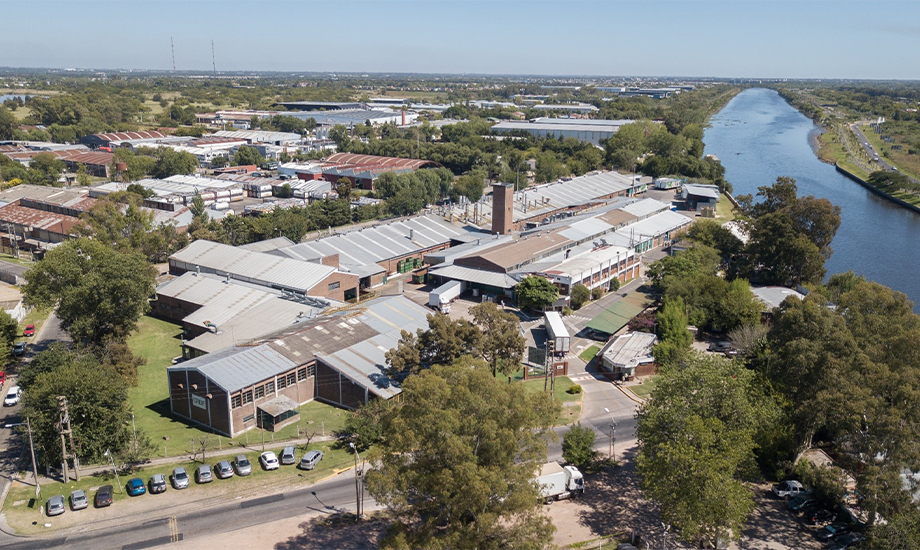- Sobre nossa empresa
- Sobre o nosso relatório
- Estratégias de Sustentabilidade
- Metas e Desempenho
- Índices de relatórios ESG
- Relatório de downloads
Destaques
- A estratégia climática da Greif, incorporada em todas as nossas operações, é essencial para minimizar o impacto da Greif no meio ambiente e estabelecer parcerias eficazes com nossos clientes enquanto trabalhamos para viabilizar suas metas relacionadas ao clima.
- Lidar com os impactos climáticos exige soluções holísticas em toda a operação, incluindo nossas amplas iniciativas de redução de resíduos.
- Por meio do desenvolvimento e implementação da nossa estratégia Build to Last, aumentamos a supervisão do Conselho sobre nossa estratégia climática por meio da educação e conscientização sobre os riscos climáticos e tendências emergentes que podem impactar o sucesso de longo prazo do nosso negócio.
- Em 2022, concluímos um inventário mais robusto do nosso uso de energia e emissões associadas em toda a nossa organização, permitindo-nos entender melhor nossa pegada de gases de efeito estufa (GEE). Nossas emissões combinadas de GEE do Escopo 1 e Escopo 2 do AF2022 totalizaram 1.321.500 toneladas métricas. A cobertura mais completa do nosso inventário levou a um aumento ano a ano no consumo total de energia e emissões associadas.
Por que a estratégia climática é importante
A estratégia climática da Greif, incorporada em todas as operações, é fundamental para uma parceria eficaz com o meio ambiente e nossos clientes. Nossos principais clientes globais demonstraram que a ação climática é uma prioridade máxima, com quase metade definindo metas ambiciosas de descarbonização. Nosso objetivo é ser um parceiro essencial para atingir essas metas. Em toda a nossa cadeia de valor, implementamos programas de redução de energia e emissões, abraçando um futuro de baixo carbono por meio de eficiência energética aprimorada, minimização de matéria-prima e energia renovável. Uma estratégia climática forte provou ser essencial para atrair talentos. O papel da Greif como fabricante global confere responsabilidade considerável, mas apresenta muitas oportunidades para causar um impacto positivo no clima, proporcionando uma vantagem competitiva.
Governança
A Greif tem a responsabilidade de minimizar nossa pegada de carbono. Essa responsabilidade se estende por todo o ciclo de vida de nossos produtos, desde a extração de matérias-primas até o fim de sua vida útil. Desde 2010, a Greif mantém uma Equipe Global de Clima1, compreendendo representantes de todas as unidades de negócios e regiões, responsáveis por fornecer suporte, orientação e direção às instalações para identificar projetos de redução de energia e emissões. A equipe também é responsável por ajudar as instalações a desenvolver roteiros e monitorar o progresso em direção à nossa meta de 2030 para reduzir o uso de energia e as emissões absolutas de GEE do Escopo 1 e Escopo 2. Por exemplo, como parte de nossa recente Cadeia de mantimentos iniciativas e roteiros relacionados, estamos trabalhando para reduzir as emissões de nossos veículos e empilhadeiras. Além disso, uma parcela significativa de nossas emissões de Escopo 3 está associada às nossas matérias-primas e ao manuseio de fim de vida útil de nossos produtos. Nossos esforços para impulsionar o desenvolvimento sustentável Inovação e Fabricação Circular apoiar nossa estratégia climática e permitir nossa capacidade de reduzir as emissões de GEE em parceria com nossos fornecedores e clientes.
Fortalecer nossa governança climática tem sido uma área prioritária no pilar Protecting Our Future da nossa Build to Last Strategy. Como tal, aumentamos a supervisão do Conselho por meio do engajamento e educação sobre o clima para reforçar nossas práticas de governança. Esse engajamento aumentou a conscientização sobre a importância dos riscos climáticos e tendências emergentes que podem impactar o futuro do setor de embalagens. Essas conversas nos ajudam a criar mais conexões entre clima e emissões dentro de nossos segmentos operacionais.
Para avançar ainda mais em nossas práticas de gestão climática após os resultados de uma análise de lacunas em relação às recomendações da Força-Tarefa sobre Divulgações Financeiras Relacionadas ao Clima (TCFD), realizamos novamente uma série de workshops internos sobre risco climático para entender melhor os riscos e oportunidades relacionados ao clima que nossos negócios enfrentam. Por meio dos workshops, colegas de departamentos multifuncionais e de toda a nossa presença global colaboraram para identificar, classificar e avaliar riscos e oportunidades regulatórios, de mercado e físicos relacionados ao clima. Os resultados desses workshops são compartilhados em toda a organização para dar uma melhor compreensão e explicação de nossos riscos. Além disso, as descobertas são integradas em nossos processos e pesquisas de gestão de risco, reforçando estratégias já em vigor, como nossas iniciativas de economia circular. Em 2022, concluímos uma avaliação de risco de cenário de terceiros e uma análise de risco de transição, alinhadas às diretrizes do TCFD, para entender melhor nossos riscos e oportunidades baseados no clima. Também iniciamos uma avaliação de terceiros de nossos riscos físicos para determinar como eles impactam nossos negócios financeiramente, o que ainda está em andamento, e planejamos compartilhar nossas descobertas em 2023. Visite o site deste relatório Gestão de Riscos seção para saber mais sobre nosso processo de gerenciamento de riscos corporativos.
|
Risco / Oportunidade |
Tópico |
Descrição*
|
|---|---|---|
|
Risco |
Catástrofe natural |
Grande inundação/furacão/terremoto/tempestade de vento, etc., levando à perda de uma instalação de produção importante ou valiosa (uma ou várias). |
|
Risco |
Mecanismos de precificação do carbono |
Regulamentos de precificação de carbono, como sistemas de cap-and-trade e impostos de carbono, estão impactando Greif em alguns mercados (Europa e América do Norte) e podem surgir em outras regiões. Isso se manifesta como uma despesa substancial e crescente. |
|
Risco |
Investimentos ineficientes / planejamento de capital |
A falta de recursos para entender completamente o impacto das mudanças regulatórias em decisões estratégicas e investimentos pode levar a uma alocação de capital abaixo do ideal. Isso inclui instalações se tornando obsoletas mais rapidamente do que o esperado e um ROI menor do que o esperado.
|
|
Risco |
Resiliência / continuidade da produção |
Capacidades organizacionais excepcionais, resiliência empresarial associada, preparação e agilidade permitirão que a Greif retome os níveis de produção mais rapidamente e ofereça melhor suporte a colegas, clientes e comunidades ao longo do tempo, caso interrupções e catástrofes se tornem mais comuns.
|
|
Risco |
Catástrofe ambiental direta
|
Grandes eventos climáticos/meteorológicos em instalações importantes, como as operações da Delta, Vreeland e Paper Mill, levando a um grande evento ambiental, evento financeiro e potencialmente levando a problemas de relações públicas/imagem.
|
| Risco e oportunidade | Mudança nas preferências do cliente | A demanda por produtos sustentáveis está aumentando. O risco de que a Greif não esteja se movendo rápido o suficiente para responder ao uso crescente de materiais reciclados em processos de produção pode reduzir a demanda pelos produtos e serviços da Greif. Além disso, regulamentações relacionadas ao clima que limitam os mercados finais dos produtos da Greif, como a indústria de petróleo e gás, podem limitar os negócios da Greif ao diminuir a demanda por seus produtos e serviços em mercados-chave. A Greif pode capitalizar essa oportunidade aumentando nosso portfólio de produtos sustentáveis rapidamente. |
| Oportunidade | Impacto no negócio de reciclagem da Greif | Cenários climáticos de maior ambição dependem do aumento das taxas de reciclagem de aço e plástico. Se posicionada apropriadamente, a Greif pode ser capaz de aumentar a escala de sua prática atual de recondicionamento. |
|
Oportunidade |
Resiliência
|
Capacidades organizacionais excepcionais associadas à resiliência, preparação e agilidade dos negócios permitirão que a Greif retome os níveis de produção mais rapidamente e ofereça melhor suporte a colegas, clientes e comunidades ao longo do tempo, caso interrupções e catástrofes se tornem mais comuns. |
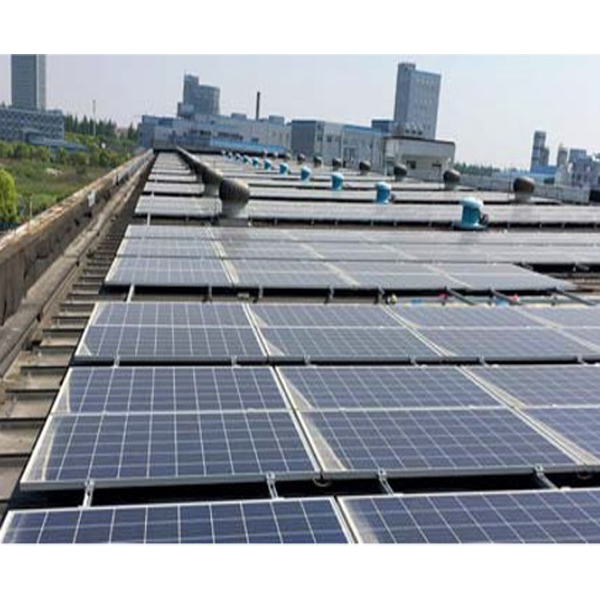
Promovendo a energia renovável
As energias renováveis, como biomassa, energia solar e eólica, desempenharão um papel importante no enfrentamento dos desafios das mudanças climáticas a longo prazo. Estamos comprometidos em testar e expandir tecnologias de energia renovável em nossas operações globais quando isso for economicamente viável e no melhor interesse de nossos stakeholders. No total, instalamos mais de 11.500 painéis solares capazes de 3,1 milhões de quilowatts-hora (kWh) de produção solar. Desde 2016, temos aumentado a quantidade de energia renovável que obtemos de locais no local e fora do local em nossa presença global. Os locais da Greif na América do Norte, Brasil, Chile, China, República Tcheca, Israel e Holanda obtêm energia renovável até o momento. As energias renováveis agora respondem por 14% do uso de energia da Greif por meio de nosso investimento contínuo. Continuamos avaliando oportunidades para obter energia renovável adicional. Por exemplo, conduzimos um estudo para avaliar e classificar os melhores locais da Greif para instalações solares no local na América do Norte.
Nos últimos anos, nosso consumo total de energia aumentou. Estamos analisando mais profundamente nossos investimentos em projetos de eficiência energética e explorando diferentes mecanismos e modelos de financiamento para reduzir nosso uso de energia e ter um orçamento dedicado definido para gerenciamento de energia e emissões. A eficiência energética é uma consideração fundamental na implantação de capital e vital para atingir as metas de uso de energia. Incluímos ESG nos critérios para solicitações de capital como parte de nosso sistema de alocação de capital e selecionamos os benefícios ESG. Os benefícios incluem economia de custos, consumo de energia reduzido, uso de matéria-prima reduzido e aumento da saúde e segurança de pessoas e produtos.
Em 2022, implementamos 45 projetos de eficiência energética, resultando em uma economia anual de quase 13 milhões de quilowatts-hora (kWh) e aproximadamente $750.000 em toda a nossa organização. Esses projetos incluem a substituição de equipamentos e a atualização de processos que reduzem a demanda de energia, como proteção solar, recuperação de calor residual e implementação de eficiência energética práticas como iluminação e substituições de HVAC. Nossos colegas buscam continuamente oportunidades para melhorar e atualizar tecnologia e equipamentos para eficiência energética. Para identificar melhor as oportunidades de eficiência energética, conduzimos auditorias em todas as nossas instalações na América Latina (LATAM), incluindo um estudo preliminar de energia em todos os locais. O estudo identificou 447 áreas de foco, as cinco principais respondendo por 85% de nossas oportunidades totais de redução de energia na região da LATAM. Estamos desenvolvendo roteiros para reduzir o consumo de energia com base em nossas descobertas deste estudo. Para obter mais informações sobre nossos projetos de eficiência energética, consulte as seções C4.3, C4.3a e C4.3b de nosso Resposta climática do CDP 2022.
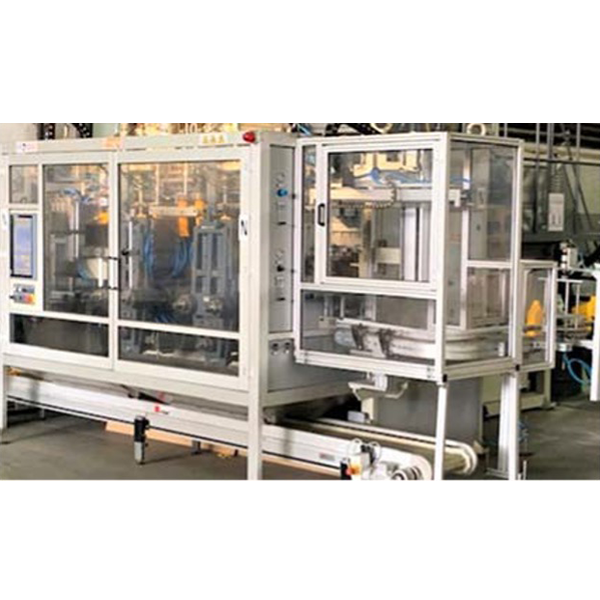
Eficiência Energética na Produção
A Greif investiu recentemente em uma nova máquina de moldagem por sopro para fabricar os galões plásticos da Greif em nossa fábrica de Casablanca, Marrocos. O novo motor usa até 30% menos energia do que máquinas mais antigas, ao mesmo tempo em que oferece produtividade significativamente maior. O novo equipamento aumenta a capacidade de produção em até 25% para nossas garrafas de um a cinco litros e foi projetado para otimizar e reduzir o uso de matéria-prima, estendendo o benefício ambiental da máquina além do uso de energia.
A equipe no Marrocos também implementou outros projetos de eficiência energética, como a eliminação de vazamentos de ar em nossas plantas de plástico e aço, a substituição de extrusoras hidráulicas por elétricas em quatro máquinas, a atualização de equipamentos antigos e a substituição de motores CC por motores CA em várias máquinas de moldagem por sopro, o que ajuda a reduzir significativamente nosso consumo de energia.
Greif reconhece que lidar com os impactos climáticos requer soluções holísticas em toda a operação. Portanto, gerenciar resíduos é uma parte mais ampla da nossa estratégia de sustentabilidade que impacta as emissões. Ao reduzir a quantidade de resíduos enviados para aterros, podemos reduzir as emissões associadas ao transporte, triagem e processamento de resíduos. Além disso, nossos esforços de redução de resíduos evitam a produção de gás de aterro, uma mistura particularmente potente de gases de efeito estufa gerados à medida que os resíduos se decompõem. Atualmente, desviamos 85% dos nossos resíduos dos aterros e trabalhamos continuamente para reduzir os 15% restantes dos resíduos enviados para aterros. Em 2022, desviamos mais de 1,5 milhão de toneladas de papel reciclado dos aterros.
*Por favor, veja Greif's Resposta às mudanças climáticas do CDP 2022 para informações adicionais
[1] Anteriormente a Equipe Global de Energia
Metas, Progresso e Desempenho
Em 2020, conduzimos uma análise e avaliação detalhada com um terceiro sobre nossa capacidade de nos comprometermos com uma meta que seria aprovada pelo Iniciativa de Metas Baseadas na Ciência (SBTi). Em seguida, anunciamos nosso compromisso de reduzir nossas emissões de Escopo 1 e Escopo 2 em 28% até 2030, em relação à linha de base de 2019. Essa meta está alinhada com a ciência climática predominante para limitar o aquecimento global abaixo de 2 graus Celsius. Até o final do ano que vem, 2023, a Greif também concluirá uma avaliação de suas emissões de Escopo 3 e determinará a viabilidade de uma aspiração de emissões líquidas zero de longo prazo em alinhamento com a Science Based Targets Initiative.
Em 2022, começamos a investigar e buscar alternativas renováveis para substituir nosso consumo atual de eletricidade e gás natural. Também anunciamos nosso compromisso de reduzir nosso uso de energia em 10% para cada unidade de produção a partir de uma linha de base de 2019. Além disso, nos concentramos em melhorar nossa investigação sobre contratos de compra de energia virtual (VPPA) e conduzimos um estudo solar no local para sites da América do Norte. Em 2023, conduziremos auditorias de energia e desenvolveremos roteiros de eficiência energética em nossas instalações de moinho.
Meta para 2030:
- Reduzir as emissões absolutas de GEE do Escopo 1 e do Escopo 2 em 28% em relação à linha de base de 2019.
- Reduzir nosso uso de energia em 10% para cada unidade de produção em relação a 2019.
|
|
AF 2017 |
AF 2018 |
AF 2019 |
AF 2020 |
AF 2021 |
AF 2022 |
|---|---|---|---|---|---|---|
|
Energia |
||||||
|
3,058,000 |
3,103,200 |
5,398,000 |
5,423,000 |
5,832,000 | 6,145,000 |
|
- |
- |
Linha de base |
- |
-0.3% | -2.3% |
|
Emissões de GEE (milhares de toneladas métricas) |
||||||
|
368 |
377 |
686 |
693 |
697 | 756 |
|
416 |
416 |
622 |
590 |
557 | 565 |
|
3,089 |
2,867 |
4,407 |
4,148 |
4,357 | 5,019 |
|
3,873 |
3,660 |
5,715 |
5,430 |
5,611 | 6,340 |
|
- |
- |
Linha de base |
- |
4.1% | 0.4% |
Notas:
- O Total de Energia e Emissões de GEE experimentaram aumentos significativos em 2019 devido à aquisição da Caraustar pela Greif. Nosso inventário do AF2022 fornece uma cobertura mais completa de suas operações e, pela primeira vez, inclui o seguinte: consumo de diesel e GLP para instalações globais, uso global de propano, cogeração na instalação de Los Angeles, uso global de aluguel de carros, consumo de eletricidade em instalações de depósito e escritório. Isso levou a um grande aumento no consumo total de energia e emissões associadas.
- O uso de energia por unidade de produção inclui apenas o uso de energia na PPS Mills, PPS CorrChoice, PPS IPG, PPS RFG, GIP EMEA, GIP APAC, GIP North America, GIP Latin America e LCS NA. Isso fornece uma comparação mais precisa ano a ano, em linha com os cálculos dos anos anteriores.
- As emissões do Escopo 2 do ano fiscal de 2019 foram recalculadas desde 2021 devido aos dados revisados de uso de energia da Greif.
- As emissões por unidade de produção incluem apenas as emissões associadas ao uso de energia na PPS Mills, PPS CorrChoice, PPS IPG, PPS RFG, GIP EMEA, GIP APAC, GIP North America, GIP Latin America e LCS NA. Isso fornece uma comparação mais precisa ano a ano, em linha com os cálculos dos anos anteriores.
- Declaração de verificação de GEE de 2022
Greif Pudahuel no Chile alcança 100% de energia renovável
A usina siderúrgica Pudahuel da Greif no Chile foi nossa primeira instalação na América Latina a operar com energia 100% renovável. Por meio de um projeto de dois anos, em parceria com a fornecedora de energia IMELSA ENERGIA, a instalação conseguiu mover todo o seu fornecimento de eletricidade para fontes 100% renováveis. A instalação produz grandes tambores de aço, tambores cônicos e garrafas de água para os mercados de produtos químicos, óleo lubrificante e alimentos e bebidas. Essa mudança avança nossa estratégia de sustentabilidade, apoia nossa meta de redução de emissões de GEE para 2030 e ajuda a apoiar as metas de redução de emissões do Escopo 3 de nossos clientes.
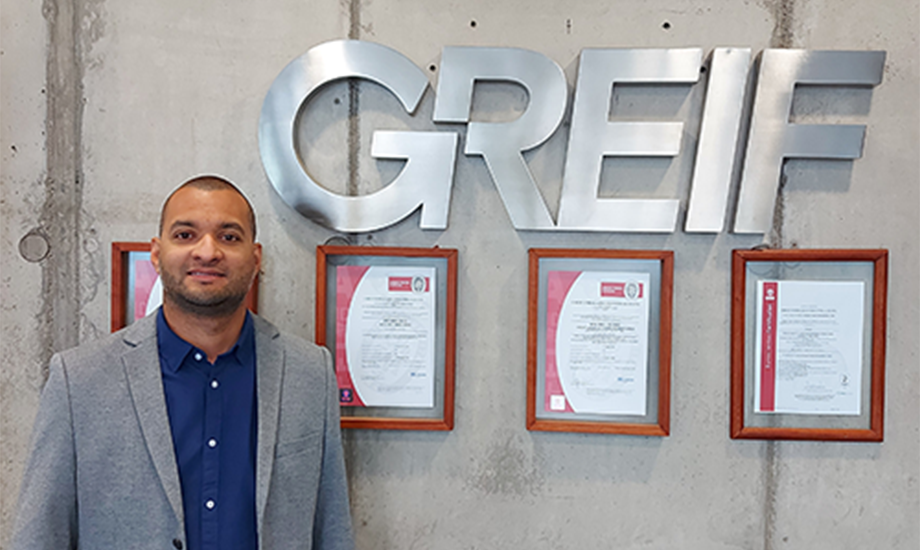
Resposta à demanda da Enel X
Desde 2011, a Greif participa do Demand Response (DR) com a Enel X, uma divisão do Enel Group Worldwide, uma empresa multinacional de energia e líder integrada nos mercados mundiais de energia e gás. O DR e o monitoramento de energia em tempo real da Enel X permitem que uma empresa tenha acesso a oportunidades de mercado para monetizar a flexibilidade, aumentar a confiabilidade operacional e destacar avanços em sustentabilidade. A Greif acumulou mais de $3,5 milhões em ganhos de DR, com $385.000 somente em 2021. Existem aproximadamente 54 sites da Greif atualmente qualificados para DR e monitoramento gratuito de energia em tempo real não registrados atualmente na Enel X. Estamos avaliando para determinar se os sites são candidatos qualificados e adequados para participação no DR para expandir nossa participação no programa.
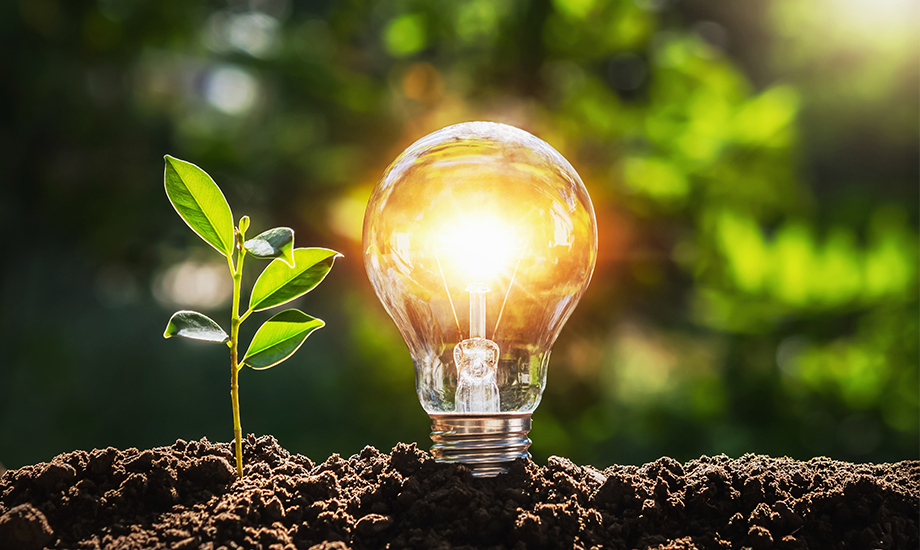
Estudo LATAM Tigre Energy
A unidade LATAM Tigre da Greif conduziu uma avaliação multidisciplinar de todas as plantas latino-americanas para implementar uma redução de 6% no consumo de energia por unidade produzida até 2025 em comparação com a linha de base de 2019. Todas as máquinas, peças periféricas, equipamentos gerais e elementos que consomem eletricidade foram identificados e avaliados, encontrando 447 áreas de foco de energia na LATAM. Dessas áreas de foco, 70 projetos estratégicos de energia foram identificados. Em novembro de 2022, 14 projetos foram concluídos, resultando em uma economia de custos de energia de $72.500 por ano e uma redução no uso de energia de 573.000 quilowatts-hora por ano. Este estudo de energia foi um dos cinco projetos impactantes na região LATAM, ganhando o Prêmio Global de Sustentabilidade Michael J. Gasser da Greif, mostrando o quão bem a sustentabilidade está integrada em todos os aspectos de seus negócios.
